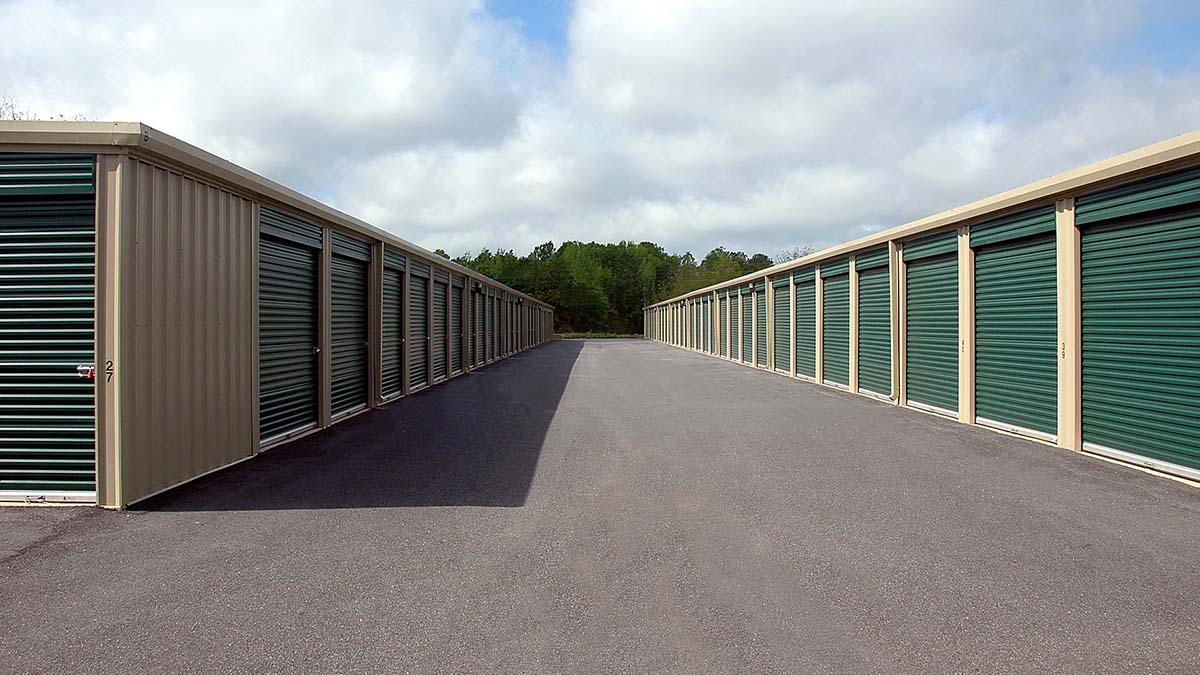
In the ever-changing world of real estate investing, storage units and self-storage units have recently gained popularity. The rise in popularity leaves many investors asking the question: “Are storage units profitable?”
While storage space first appears to be a low-risk investment with consistent profits and fewer headaches than managing office buildings, an apartment building, or other real estate ventures, the truth may be more complicated. Like all commercial real estate investing, there are multiple elements to consider, including the self-storage market rates, construction costs, local zoning requirements, and local property taxes that will determine whether the facility is profitable or not.
To help you understand what to look for when considering the profitability of self-storage properties, we examine the specifics of self-storage industry and provide you with the knowledge you need to make wiser investing choices. Let’s begin.
Are Storage Units Profitable?
Simply said, yes. However, as with other investments and enterprises, how you buy and run self-storage businesses will ultimately determine how much money you generate. The size and location of the facility, whether you borrowed money to purchase the property, the interest rate you secured on any debt, the kind of operational costs you incur, the price you can charge for each unit, and any other income sources you may add to the property will all have an impact on your return on investment.
Reports across the United States suggest self-storage companies make between $50,000 and $500,000+ in net operating income each year. This is a large range which can make it challenging to gauge how much self storage facilities will produce as a self-storage investor. The large range is primarily driven by size and market rate. As you might expect, a 500-unit facility located in a heavily populated urban area with high demand will earn more than a small 10 storage unit business in a small rural town with a lot of competition.
All in all, self-storage investing can be profitable and provide a high return with low maintenance if the facility is purchased at a reasonable purchase price, located in a high-traffic area with easy access, is regularly promoted with effective marketing plans to maintain a high occupancy rate, and provides some additional services such as automation or climate-controlled units.
How Much Do Storage Units Make A Month?
The monthly income potential of a storage facility is affected by several variables, including the facility’s size, location, neighborhood storage need, local competition, and pricing per unit. The typical monthly revenue for a small 5×5 storage unit is typically between $50 and $150, whereas the average monthly revenue for a bigger 10×30 storage unit is between $150 and $450. However, the variables mentioned earlier can drastically affect these numbers. Whenever you evaluate a self storage facility or self storage investment, be sure to research local rates to ensure you’re not over-projecting revenue numbers.
What is the Profit Margin on Storage Units?
Depending on the location and size of the facility, self-storage companies in the U.S. are said to have net profit margins ranging from 11% to 30%. Active self-storage operators who regularly examine their operating and debt expenses, market conditions, and income will likely be able to secure higher profit margins than storage unit owners who are less involved. Additionally, the profit margin on the units depends on the storage unit owner salary. Some self storage owners pay themselves a monthly salary whereas others the to make as much profit as possible and then pay themselves in distributions at different times of the year.
What Factors Impact the Profit Margin on Storage Units?
Several factors can impact the profit margin on self-storage facilities, including:
1. Facility Size:
The self storage industry includes all different sizes of facilities. As a general guide, you can summarize facility size into three groups:
- Small (less than 50,000 square feet)
- Medium (between 50,000 and 100,000 square feet)
- Large (100,000 sq. ft. or more)
As you can expect, the sheer quantity of rentable square footage greatly impacts the amount of money a facility can generate.
2. Location:
Another crucial element affecting the self-storage facility’s earnings is its location. The population density and demand are often higher in larger markets, which results in a higher rental fee per square foot. Supply and demand are critical to operating a profitable business.
3. Rental Rates:
The rental rates, which are typically determined by the market rate, square footage of the unit, and any included amenities or upgrades (such as climate control), are essential variables. Rental rates typically vary from 50 cents to $2 per square foot, with higher rates in locations with more demand and a denser population.
4. Operating Costs:
A storage unit facility’s operating expenses often include property taxes, insurance, utilities (like electricity, internet, and water), advertising and marketing, pay and salary for staff, maintenance and repairs, and equipment and supplies. In addition, there can also be expenses for adhering to local zoning or building laws during renovations.
5. Renovation Costs:
Purchasing an existing self storage facility and renovating it to increase rents can be a great way for self storage investors to maximize profits. However, every renovation comes with a cost and while it can help increase gross revenue, it can also increase the monthly debt payment if you take out a loan to fund the renovations. Because of this, always double check that the renovations will increase (rather than decrease) monthly cash flow.
6. Size of Units:
Because larger units often fetch a higher rent price, the size of the units within the existing facility can also affect the profit margin.
7. Amenities:
The profit margin may grow with the inclusion of amenities like climate control, security measures, or 24-hour access.
How Much Money Do Storage Facilities Actually Make?
As discussed, the location, unit size, and facility size are key factors to take into account when estimating the profit potential of storage facilities. However, let’s explore some general numbers to provide a ballpark idea as to how different storage facilities can generate different amounts of profit.
Small Facilities (20,000 square feet)
If a modest facility with 20,000 square feet charges 50 cents per square foot, the yearly total revenue would be $120,000. The expense ratios for small facilities, however, can be substantial, frequently ranging from 70 to 90 percent. Although the trend toward automation in small operations might assist in reducing these costs, we’ll utilize a 75% expense ratio in this example. The remaining profit would be $30,000 ($120,000 in gross income minus $90,000 in costs).
Medium Facilities (50,000 square feet)
A medium-sized building with 50,000 square feet would provide a gross revenue of $240,000 at $1 per square foot. Utilizing an expense ratio of 75%, this particular property would generate a profit of $60,000 after costs of around $180,000.
Large Facilities (100,000 square feet)
A large facility at 100,000 square feet charging $2 per square foot could result in a gross income of $480,000. With expenses estimated at 75%, or $360,000, this property could generate a profit of $120,000.
Summary
Many ask, “is storage units a good investment?” The short answer is that self-storage investments can be a great way to diversify your real estate investments and make a lot of money. However, not all self storage units are the same, and their success is highly dependent upon variables like location, facility size, and rent rates.
One of the best ways to succeed in the self storage business is to look for larger facilities in high-traffic and high-demand areas to maximize the annual revenue of the facility while keeping normal operating expenses under control. This general framework can help increase your chances of succeeding when investing in storage units as an active investor or a passive investor.
If you’re new to investing, consider exploring the other types of real estate, different forms of special purpose real estate, and our complete guide to real estate investing for beginners.



